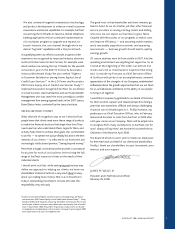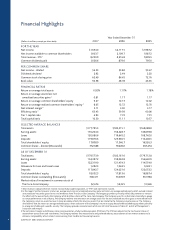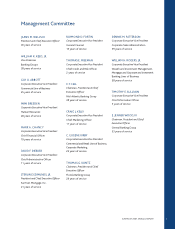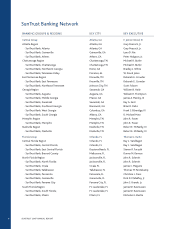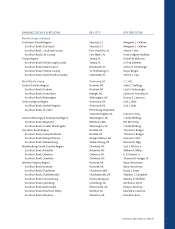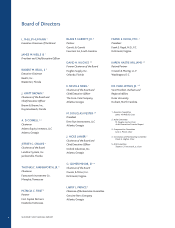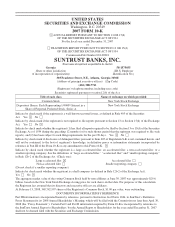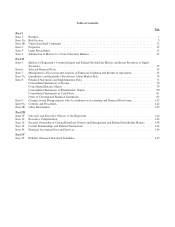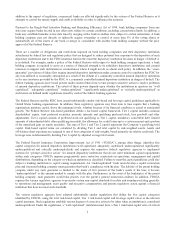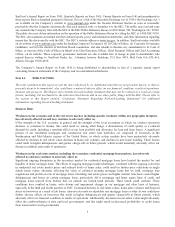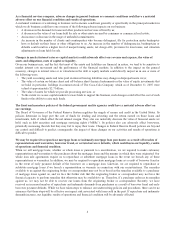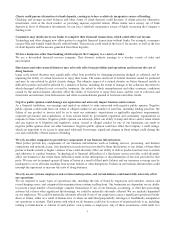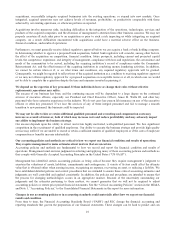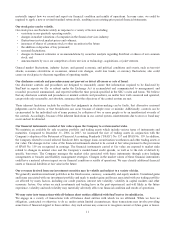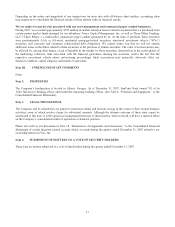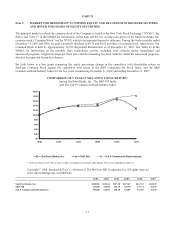SunTrust 2007 Annual Report Download - page 15
Download and view the complete annual report
Please find page 15 of the 2007 SunTrust annual report below. You can navigate through the pages in the report by either clicking on the pages listed below, or by using the keyword search tool below to find specific information within the annual report.six percent, a total risk-based capital ratio of at least ten percent and a leverage ratio of at least five percent and not be subject
to a capital directive order.
Regulators also must take into consideration: (a) concentrations of credit risk; (b) interest rate risk (when the interest rate
sensitivity of an institution’s assets does not match the sensitivity of its liabilities or its off-balance-sheet position); and
(c) risks from non-traditional activities, as well as an institution’s ability to manage those risks, when determining the
adequacy of an institution’s capital. This evaluation will be made as a part of the institution’s regular safety and soundness
examination. In addition, the Company, and any bank with significant trading activity, must incorporate a measure for market
risk in their regulatory capital calculations.
There are various legal and regulatory limits on the extent to which the Company’s subsidiary bank may pay dividends or
otherwise supply funds to the Company. In addition, federal and state bank regulatory agencies also have the authority to
prevent a bank or bank holding company from paying a dividend or engaging in any other activity that, in the opinion of the
agency, would constitute an unsafe or unsound practice. The Federal Deposit Insurance Act (“the FDI Act”) provides that, in
the event of the “liquidation or other resolution” of an insured depository institution, the claims of depositors of the
institution (including the claims of the FDIC as subrogee of insured depositors) and certain claims for administrative
expenses of the FDIC as a receiver will have priority over other general unsecured claims against the institution. If an insured
depository institution fails, insured and uninsured depositors, along with the FDIC, will have priority in payment ahead of
unsecured, nondeposit creditors, including the parent bank holding company, with respect to any extensions of credit they
have made to such insured depository institution.
FDIC regulations require that management report annually on its responsibility for preparing its institution’s financial
statements, and establishing and maintaining an internal control structure, and procedures for financial reporting, and
compliance with designated laws and regulations concerning safety and soundness.
On November 12, 1999, financial modernization legislation known as the Gramm-Leach-Bliley Act (the “GLB Act”) was
signed into law. Under the GLB Act, a bank holding company which elects to become a financial holding company may
engage in expanded securities activities, insurance sales, and underwriting activities, and other financial activities, and may
also acquire securities firms and insurance companies, subject in each case to certain conditions. The Company has elected to
become a financial holding company under the GLB Act. If any of our banking subsidiaries ceases to be “well capitalized” or
“well managed” under applicable regulatory standards, the Federal Reserve may, among other things, place limitations on
our ability to conduct these broader financial activities or, if the deficiencies persist, require us to divest the banking
subsidiary. In order to become and maintain its status as a financial holding company, the Company and all of its affiliated
depository institutions must be “well-capitalized,” “well-managed,” and have at least a satisfactory Community
Reinvestment Act of 1977 (“CRA”) rating. Furthermore, if the Federal Reserve determines that a financial holding company
has not maintained a satisfactory CRA rating, the Company will not be able to commence any new financial activities or
acquire a company that engages in such activities, although the Company will still be allowed to engage in activities closely
related to banking and make investments in the ordinary course of conducting merchant banking activities.
The USA Patriot Act of 2001 (“Patriot Act”) substantially broadens existing anti-money laundering legislation and the
extraterritorial jurisdiction of the United States; imposes new compliance and due diligence obligations; creates new crimes and
penalties; compels the production of documents located both inside and outside the United States, including those of non-U.S.
institutions that have a correspondent relationship in the United States; and clarifies the safe harbor from civil liability to
customers. The United States Department of the Treasury has issued a number of regulations that further clarify the Patriot Act’s
requirements or provide more specific guidance on their application. The Patriot Act requires all “financial institutions,” as
defined, to establish certain anti-money laundering compliance and due diligence programs. The Patriot Act requires financial
institutions that maintain correspondent accounts for non-U.S. institutions, or persons that are involved in private banking for
“non-United States persons” or their representatives, to establish, “appropriate, specific and, where necessary, enhanced due
diligence policies, procedures, and controls that are reasonably designed to detect and report instances of money laundering
through those accounts.” Bank regulators are focusing their examinations on anti-money laundering compliance, and the
Company continues to enhance its anti-money laundering compliance programs.
Federal banking regulators, as required under the GLB Act, have adopted rules limiting the ability of banks and other
financial institutions to disclose nonpublic information about consumers to nonaffiliated third parties. The rules require
disclosure of privacy policies to consumers and, in some circumstances, allow consumers to prevent disclosure of certain
personal information to nonaffiliated third parties. The privacy provisions of the GLB Act affect how consumer information
is transmitted through diversified financial services companies and conveyed to outside vendors.
3


